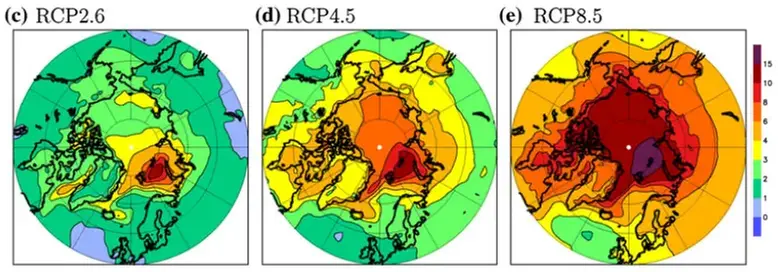Climate models
The Rossby Centre works primarily with the climate models that are developed in the research unit. Rossby Centre is involved in the development of the regional HCLIM model and the global EC-Earth model as part of an European-wide consortia, thus promoting international cooperation and access to wide knowledge and data base.
A tool to understand the future climate
A core activity of the Rossby Centre is the development of both global and regional climate models, which are utilized extensively in national and international projects and collaborations, to improve understanding of the climate system and to provide information on the future climate for society, policy and decision makers.
Climate models use mathematical equations that describe physical processes in the atmosphere, ocean, cryosphere, biosphere and land. They are the primary tool society has to describe the potential future evolution of the climate system. The Rossby Centre is at the forefront of the development of both regional and global climate models.'
International collaboration is key
Rossby Centre, as a leading partner of the European wide EC-Earth consortium, contributed to the development of the global Earth System Model versions of EC-Earth that has been used to perform climate simulations for the Climate Model Intercomparison Project Phase 5 and 6 (CMIP5 and CMIP6). The current EC-Earth3-version includes options for atmospheric composition, dynamic vegetation, ocean bio-geo-chemistry and a Greenland ice sheet and allows thus to analyse interactions and feedbacks between different Earth system components and their importance for global and regional climate change.
Currently, Rossby Centre is involved in the development of a new EC-Earth-version, EC-Earth4, with the aim to further improve the representation of key processes in the climate system.
Meeting the need of higher resolution
Global climate models provide the large-scale picture of the climate and the climate change signal. To serve as a national planning instrument, robust assessment of that signal is necessary at regional to local scales where the impact is felt and adaptation needs exist. This requires higher spatial resolution than global models can provide. Regional features such as steep orography, varying soil and vegetation properties, and small-scale landscape heterogeneities are important for the local climate signal, especially for the occurrence of short-term extremes.
Regional climate models with enhanced grid resolution are applied downstream of the global models, using the global model scenarios as input data, to provide more regional details of the climate change signal.
Since 1997 the Rossby Centre has developed an international standing in the field of regional climate modelling with the development of the atmospheric model RCA, the ocean-atmosphere coupled version RCA-NEMO and a version of RCA including interactive vegetation processes, RCA-GUESS. Since 2016, Rossby Centre has focused on the development of the very high resolution regional atmosphere model HCLIM, together with European partners. HCLIM can operate at spatial scales down to a few kilometers and comparison to observations indicate strong progress towards a more realistic representation of extreme precipitation events.


